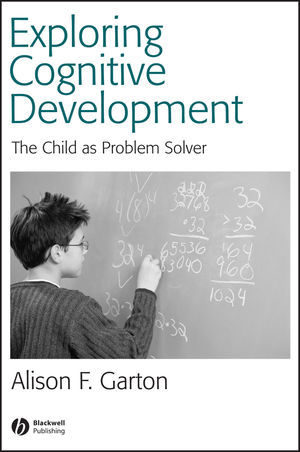Exploring Cognitive Development: The Child As Problem SolverISBN: 978-0-631-23458-6
Paperback
160 pages
April 2004, Wiley-Blackwell
 |
||||||
Preface vii
1: Introduction 1
Problem Solving 3
Social Explanations for Cognitive Change 6
Change in the Context of Interactive/Collaborative Problem Solving 9
Domain Specific Knowledge 10
Children’s Potential to Change 11
Theories of Mind 13
The Way Forward 14
2: Theoretical Overview 15
Piaget and Vygotsky: Is There Any Common Ground? 17
Peer Interaction: Various Perspectives 23
Implications for Piagetian and Vygotskian Theories 33
Research on Collaboration: Beyond Social Interaction 34
Sociocultural Theory 36
Dynamic Systems 41
Nature of the Problem to be Solved 42
How Else Can Problem Solving be Described and Explained? 43
3: Strategy Use and Learning in Problem Solving 44
Domains 45
Domains as Constraints on Cognitive Development 48
Innateness and Domain-specificity 49
Domains and the Social Environment 52
Strategy Choice 53
Learning New Strategies 66
4: Social Problem Solving 69
Peer Interaction and Problem Solving: A Theoretical Conundrum 70
Peer Interaction in the Classroom 77
Peer Interaction and Adult–Child Interaction 79
Theory of Mind and Problem Solving 80
Self-regulation in Problem Solving 84
Help Seeking in Problem Solving 87
The Role of Talk in Collaborative Problem Solving 89
Conclusion 94
5: What the Child Brings to the Task 96
Readiness to Benefit from Interaction 97
Cognitive Flexibility 97
Friendship and Sociability 106
Motivation to Collaborate 117
6: Summary, Review and implications 120
What and How Revisited 121
Difficulties Yet to Be Surmounted 124
Implications 126
References 129
Author Index 136
Subject Index 138



